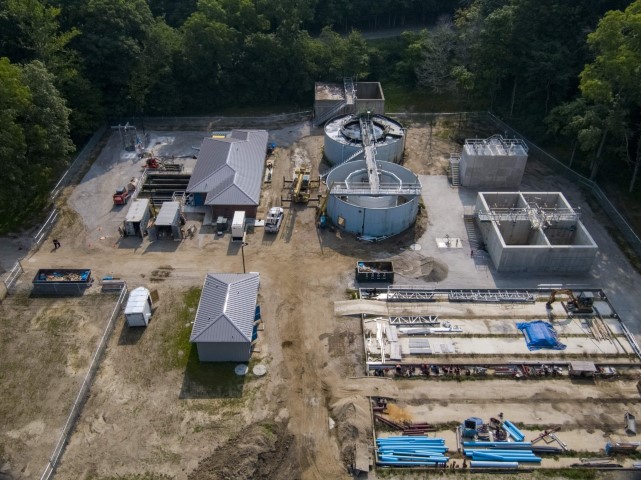3 reasons to upgrade a wastewater treatment plant
The Clean Water Act (CWA) of 1972 paved the way for the mass-scale construction of wastewater treatment plants across the United States. The significant improvement in the quality of effluent water at the time could be credited to these treatment plants, or Publicly Owned Treatment Works (POTWs). However, most treatment plants at the time offered an average lifespan of 40-50 years, and they are now nearing the end of their lifetime.
Outdated treatment plants elicit releases of sewage into waterways. For example, incidents such as the recent emergency discharge at the Hyperion wastewater treatment facility in Los Angeles highlight the need to revamp wastewater infrastructure.
When planning to overhaul an ailing wastewater treatment plant, municipal leaders must pay attention to the three Rs — Rehabilitation, repair or replacement. While construction is always an option, it is often the most expensive one. A cost-effective alternative is to upgrade a wastewater treatment plant with a mix of retrofitting and repairs. A project of this scale will require meticulous planning and substantial funding, but everything begins with identifying the key reasons to upgrade a wastewater treatment plant.
Three key reasons to upgrade a wastewater treatment plant
Efficiency and cost are important considerations when identifying the reasons to upgrade a wastewater treatment plant. And they are interrelated as well: Investing in the latest wastewater treatment technologies can prove cost-efficient in the long run. The key reasons to plan a wastewater treatment plant upgrade are:
1. New treatment standards and effluent limitations guidelines
According to the CWA, the effluent discharge by a municipal wastewater treatment plant should meet a minimum of secondary treatment using biological treatment processes to remove organic matter in wastewater after preliminary and primary treatment processes are complete.
However, the effluent discharge of secondary treatment can contain heavy metals, organic chemicals, plastics, synthetic fibers and other pollutants. The potential risks of these components to the environment and humans have convinced the U.S. Environmental Protection Agency (EPA) to consider revising wastewater treatment standards and effluent limitation guidelines. New treatment standards could compel wastewater treatment facilities to upgrade and retrofit facilities with newer technologies.
2. Higher energy costs
Electricity use accounts for 25-40% of the operation and maintenance costs of a plant. With pumps, motors and other equipment running nonstop, wastewater treatment facilities are one of the largest energy consumers. About one-third of the total electricity used by a wastewater treatment plant is spent on treating sewage sludge. Improving the efficiency of aeration equipment and anaerobic digestion while investing in equipment upgrades and renewable power options can significantly reduce higher energy costs.
3. Limited capacity of a wastewater treatment plant
Around 16,000 wastewater treatment plants across the nation serve more than 75% of the population. As urban and semi-urban populations increase, treatment plants struggle to accommodate increased effluent volumes. Already, nearly 15% of the plants have reached or exceeded their design capacities. Although the expansion of the treatment facilities can help municipalities deal with higher volumes of wastewater, the lack of available land for construction makes it difficult. Upgrading the plant capacity is sometimes the only answer.
Once municipal leaders have identified reasons to upgrade their wastewater treatment plant, the next question is how to proceed with the project.
First step toward upgrading a wastewater treatment plant
Municipalities often face a funding gap when upgrading wastewater infrastructure. And a lack of funds can delay the plans to upgrade a wastewater treatment plant. That is why the first step to upgrading your wastewater treatment plant is identifying and applying for local and federal funds to support the project. Wastewater treatment plants are often funded by state-specific grants and federal grants. The EPA's revolving loan funds, United States Department of Agriculture and Community Development Block Grants are instrumental in providing low-cost and long-term funding of wastewater treatment plant upgrades.
Applying for these grants requires professional know-how, as it involves environmental site assessment, followed by a study outlining the nature and the severity of the problem at the wastewater treatment plant. A qualified engineering consultant is crucial in preparing a facility plan that determines the cost-effectiveness and environmental soundness of the project.
Fehr Graham's team of licensed process engineers and wastewater operators can help evaluate, plan and design the best environmentally compliant solutions to upgrade a wastewater treatment plant. For years, we have guided municipalities on wastewater engineering, public policies and funding solutions. Our assistance and recommendations from the pre-application phase to the design and construction phases and beyond have led to the successful completion of several challenging wastewater treatment projects.Fehr Graham is more than a standard engineering and environmental consulting firm. Our expertise in wastewater engineering will not only help upgrade a wastewater treatment plant but transform communities, too. Contact us to learn more about our services, or give us a call at 815.394.4700.
Collaborative, Insightful, Results-Driven Solutions
Fehr Graham provides innovative engineering and environmental solutions to help improve the lives and communities of our customers.


 Mick Gronewold is a Professional Engineer who enjoys helping clients find solutions to their toughest problems, even when they reach beyond engineering. He digs deep into issues and is passionate about helping find solutions. As one of the firm’s owners, Mick specializes in leading engineering and environmental projects in the private and public sectors. He takes on high-level project management and ensures scope, schedule and budget goals are consistently met.
Mick Gronewold is a Professional Engineer who enjoys helping clients find solutions to their toughest problems, even when they reach beyond engineering. He digs deep into issues and is passionate about helping find solutions. As one of the firm’s owners, Mick specializes in leading engineering and environmental projects in the private and public sectors. He takes on high-level project management and ensures scope, schedule and budget goals are consistently met.